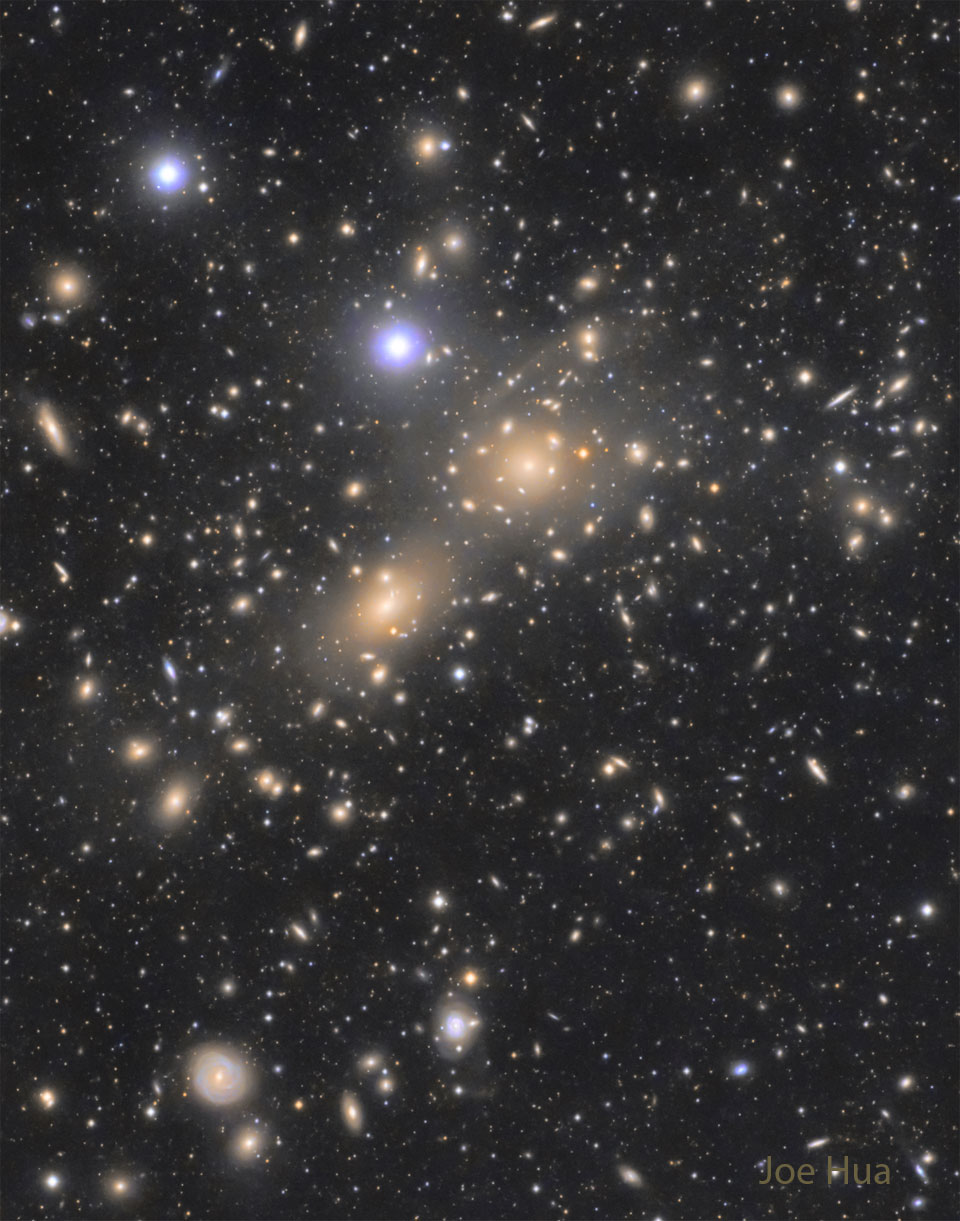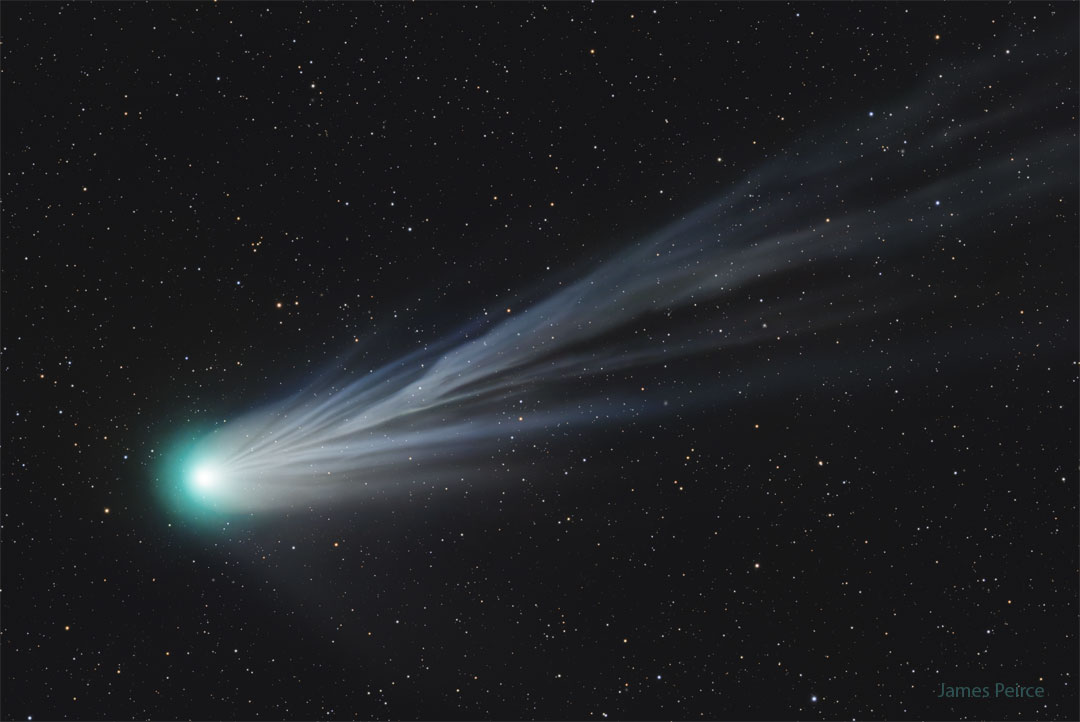
Nombre total de pages vues
27/03/2024
INVENTEURS TUéS PAR LEURS CREATIONS - Jimi Heselden

ASTRONOMY - The Coma Cluster of Galaxies
2024 March 27
Image Credit & Copyright: Joe Hua
Explanation: Almost every object in the featured photograph is a galaxy. The Coma Cluster of Galaxies pictured here is one of the densest clusters known - it contains thousands of galaxies. Each of these galaxies houses billions of stars - just as our own Milky Way Galaxy does. Although nearby when compared to most other clusters, light from the Coma Cluster still takes hundreds of millions of years to reach us. In fact, the Coma Cluster is so big it takes light millions of years just to go from one side to the other. Most galaxies in Coma and other clusters are ellipticals, while most galaxies outside of clusters are spirals. The nature of Coma's X-ray emission is still being investigated.
26/03/2024
INVENTEURS TUéS PAR LEURS CREATIONS - Henry Winstanley

ASTRONOMY - Comet Pons-Brooks' Ion Tail
2024 March 26
Image Credit & License: James Peirce
Explanation: Comet Pons-Brooks has quite a tail to tell. First discovered in 1385, this erupting dirty snowball loops back into our inner Solar System every 71 years and, this time, is starting to put on a show for deep camera exposures. In the featured picture, the light blue stream is the ion tail which consists of charged molecules pushed away from the comet's nucleus by the solar wind. The ion tail, shaped by the Sun's wind and the comet's core's rotation, always points away from the Sun. Comet 12P/Pons–Brooks is now visible with binoculars in the early evening sky toward the northwest, moving perceptibly from night to night. The frequently flaring comet is expected to continue to brighten, on the average, and may even become visible with the unaided eye -- during the day -- to those in the path of totality of the coming solar eclipse on April 8.
25/03/2024
ASTRONOMY - Sonified: The Jellyfish Nebula Supernova Remnant
2024 March 25
Image Credit: X-ray (blue): Chandra (NASA) & ROSAT (ESA); Optical (red): DSS (NSF); Radio (green): VLA (NRAO, NSF); Sonification: NASA, CXC, SAO, K. Arcand; SYSTEM Sounds: M. Russo, A. Santaguida)
Explanation: What does a supernova remnant sound like? Although sound is a compression wave in matter and does not carry into empty space, interpretive sound can help listeners appreciate and understand a visual image of a supernova remnant in a new way. Recently, the Jellyfish Nebula (IC 443) has been sonified quite creatively. In the featured sound-enhanced video, when an imaginary line passes over a star, the sound of a drop falling into water is played, a sound particularly relevant to the nebula's aquatic namesake. Additionally, when the descending line crosses gas that glows red, a low tone is played, while green sounds a middle tone, and blue produces a tone with a relatively high pitch. Light from the supernova that created the Jellyfish Nebula left approximately 35,000 years ago, when humanity was in the stone age. The nebula will slowly disperse over the next million years, although the explosion also created a dense neutron star which will remain indefinitely.
24/03/2024
ASTRONOMY - Looking Back at an Eclipsed Earth
2024 March 24
Image Credit: Mir 27 Crew; Copyright: CNES
Explanation: Here is what the Earth looks like during a solar eclipse. The shadow of the Moon can be seen darkening part of Earth. This shadow moved across the Earth at nearly 2000 kilometers per hour. Only observers near the center of the dark circle see a total solar eclipse - others see a partial eclipse where only part of the Sun appears blocked by the Moon. This spectacular picture of the 1999 August 11 solar eclipse was one of the last ever taken from the Mir space station. The two bright spots that appear on the upper left are thought to be Jupiter and Saturn. Mir was deorbited in a controlled re-entry in 2001. A new solar eclipse will occur over North America in about two weeks.
23/03/2024
ECOLOGIE -Ce cargo a adopté d’immenses voiles futuristes pour polluer moins
ASTRONOMY - DART: Impact on Asteroid Dimorphos
2022 September 27
Video Credit: NASA, JHUAPL, DART
Explanation: Could humanity deflect an asteroid headed for Earth? Yes. Deadly impacts from large asteroids have happened before in Earth's past, sometimes causing mass extinctions of life. To help protect our Earth from some potential future impacts, NASA tested a new planetary defense mechanism yesterday by crashing the robotic Double Asteroid Redirection Test (DART) spacecraft into Dimorphos, a small asteroid spanning about 170-meters across. As shown in the featured video, the impact was a success. Ideally, if impacted early enough, even the kick from a small spacecraft can deflect a large asteroid enough to miss the Earth. In the video, DART is seen in a time-lapse video first passing larger Didymos, on the left, and then approaching the smaller Dimorphos. Although the video ends abruptly with DART's crash, observations monitoring the changed orbit of Dimorphos -- from spacecraft and telescopes around the world -- have just begun.
ASTRONOMY - Globular Cluster M15 Deep Field
2025 November 26 Globular Cluster M15 Deep Field Image Credit & Copyright: Alvaro Ibanez Perez Explanation: Stars, like bees, swarm a...

-
2022 September 26 All the Water on Planet Earth Illustration Credit: Jack Cook, Adam Nieman, Woods Hole Oceanographic Institution ; Data ...
-
2025 May 11 The Surface of Venus from Venera 14 Image Credit: Soviet Planetary Exploration Program , Venera 14 ; Processing & Copyri...



